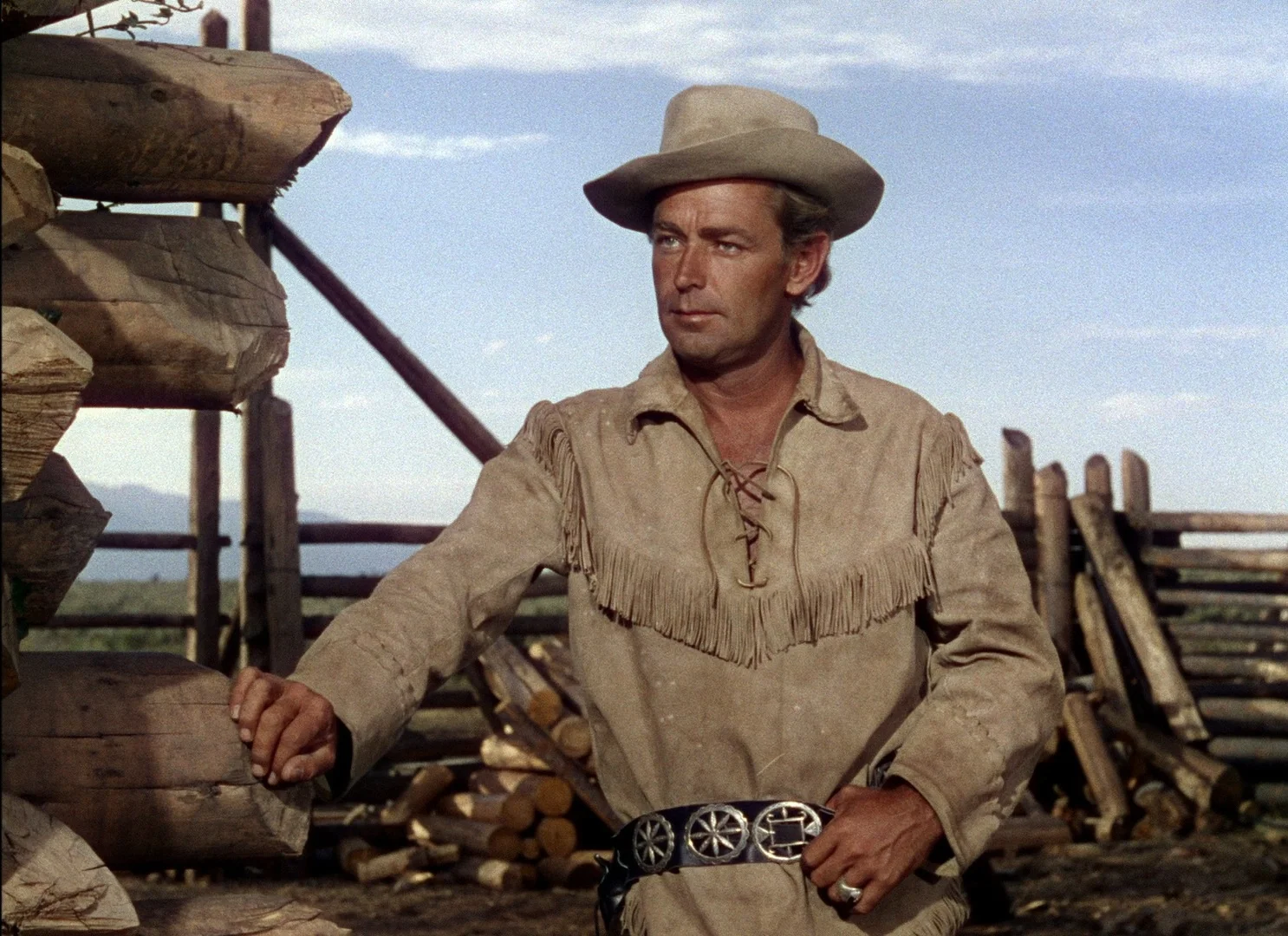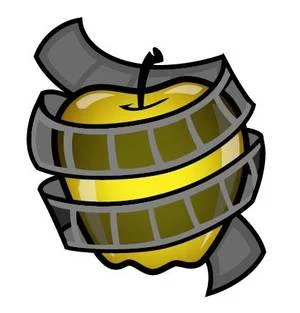VINTAGE REVIEW: Shane
SHANE-- 5 STARS
When the high overhead Technicolor shots of the gorgeous Grand Tetons in Wyoming from Oscar-winning cinematographer Loyal Griggs come down closer to identify the solitary rider of their focus, a warm smile and a wave of blond hair shine from less-than-beefy man on horseback adorned in tan leather and short tassels. Cued by a sumptuous and welcoming musical overture by Victor Young, an easy read of your cinephile senses tells you that you have just been introduced to the “good guy” of this film called Shane. For the next 118 or so minutes that follow, each bit of maximumly modest characterization informs further that this is more than a common protagonist. You’ve met “the” good guy, a western hero of unparalleled virtue and near mythic quality built on passivity over action.
Atypical to the big-talking hot heads and inflated anti-hero personalities common of the genre, Alan Ladd’s cowboy (the #16 hero of all-time) and director George Stevens’ entire film operates with a code and a compass that is idyllic and pure. Ranked the #3 western of all-time by the American Film Institute and their #45 overall American film, Shane is an anointed classic and masterpiece. Why? It’s because Shane carries itself with equal parts heroic grandeur and hardscrabble ethics that can still resonate and draw audience appreciation today, 65 years later.
Working off a Oscar-nominated screenplay by western author A.B. Guthrie, Jr. adapting Jack Schaefer’s 1949 novel that borrows the 1892 Johnson County War as a historical influence, Stevens (A Place in the Sun, Giant, The Diary of Anne Frank) shows how Ladd’s venturing former tough guy joins the uphill cause of a community of immigrant homesteaders, led by Joe Starrett, played by Van Heflin (four years before 3:10 to Yuma). With pleasantries and courtesies that exude and imbue respect, Shane seeks to earn his keep and change his unexplained and previous quick-trigger stripes that hint at a turbulent and violent past. Opposing our settlers is the opportunistic and barking cattle baron Rufus Ryker (Emile Meyer). He and his crew of wrangler muscle (including a young Ben Johnson and Best Supporting Actor Oscar nominee Jack Palance) have a stranglehold over the fertile valley and have roughed up every “sodbuster” that refuses to broker deals to work with or for Ryker.
LESSON #1: THE RIGHT TO A HOME AND A FRESH START-- Joe Starrett and his fellow pioneers are looking for a place to put down roots. Shane, meanwhile, wants to unearth the tangled ones he seemingly can’t get away from and sees a fresh start by putting down his six-shooter for a simpler and more honest life. Standing up for a sense of right and wrong that is above reproach yet nonassertive with patience, Shane and Joe comport themselves with the shared hard work and courage not to cave to Ryker’s will before the inevitable collision point of a showdown where violence is the inescapable answer.
Shane is still black hats vs. white hats, but it takes a step down to address a more common and different role in the western, the nonviolent farmer who doesn’t keep a gun at the ready on his or her hip. There’s a big dose of the American Dream underneath the western ink. Avoiding an imprudent soap opera love triangle with astute chivalry, Shane ingratiates himself to the Starrett family (and to us) through the observational point-of-view of Joe’s young son Joey (fellow Best Supporting Actor Oscar nominee Brandon deWilde) and Joe’s stalwart wife Marian (Jean Arthur, in what would be her final film role before semi-retirement).
LESSON #2: THE LINK BETWEEN MAN AND FIREARM-- One of the more revered and profound screenplay moments in Shane is an collection of statements centering on the risks and rewards of gun after a teachable moment that read, “A gun is a tool, no better or no worse than any other tool: an axe, a shovel or anything. A gun is as good or as bad as the man using it. Remember that.” There is parallel power in those lines that encapsulates societal and doctrinal challenges still at odds in today’s American landscape.
The emotional and thematic gold of Shane is found in the tender moments of father-figure substitution between Shane and Joey. Leading with a softer example of masculinity, Shane answers the doting and closely-trailing attention of Joey with ways-of-the-world lessons on patience, the power of perception, respect, how to carry oneself in a fight, the right of passage of how to use a gun, and the gravity of taking a man’s life. Peaking with a teary finale, Ladd and deWilde create an empathetic bond in Shane not commonly seen in the western genre of hard-asses without the capability of human or emotional attachments. If you don’t believe this writer, read Woody Allen’s reflection reminiscing on his own fondness of this film in a wonderful 2001 commentary piece from The New York Times.
LESSON #3: THE POSITIVE VERSION OF IDOLATRY-- Not all children have someone in their immediate lives to look up to as a hero and be an exemplar for life skills, attitude, and composure. Joey has his father, but Shane represents a higher and exciting ideal and the impact is tremendous. It’s like when a kid emulates and wishes for the cool dad character he or she sees on a TV show only deeper. Call it hero worship, dream fulfillment, or a man-crush, but when the example being followed by the impressionable youth is as rightly honorable as how it portrayed in Shane, this kind of idolatry ceases to be a bad or unhealthy thing.
LOGO DESIGNED BY MEENTS ILLUSTRATED (#686)




